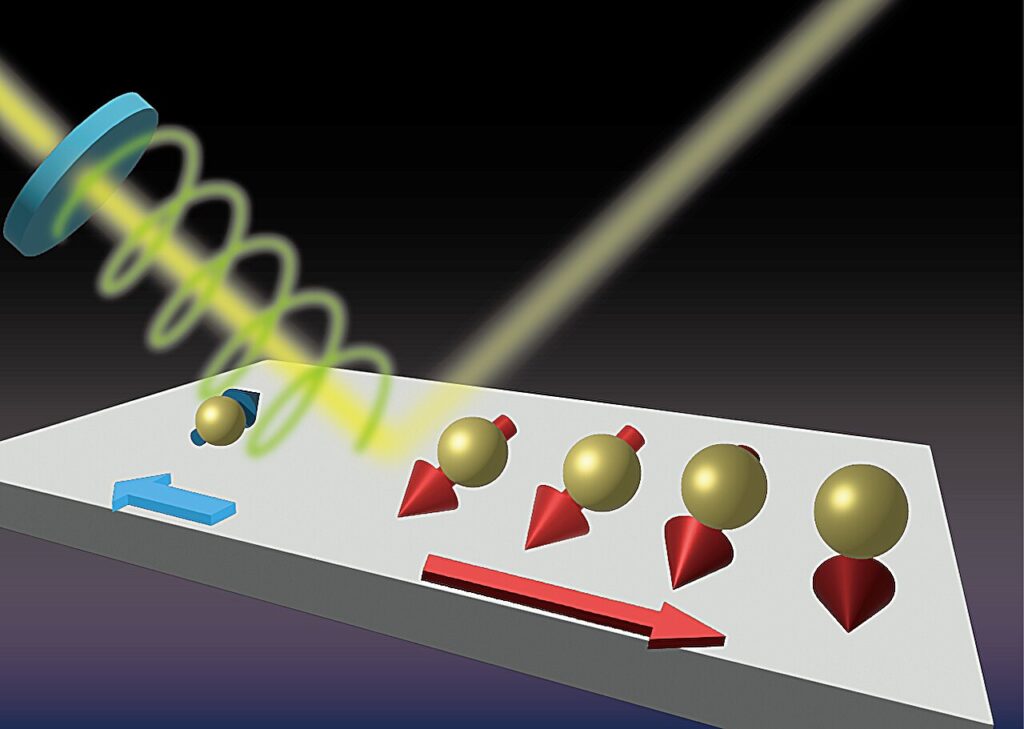Researchers at the University of Tokyo have demonstrated that the direction of the spin-polarized current can be restricted to only one direction in a single-atom layer of a thallium-lead alloy when irradiated at room temperature. The discovery defies conventions: single-atom layers have been thought to be almost completely transparent, in other words, negligibly absorbing or interacting with light.
The one-directional flow of the current observed in this study makes possible functionality beyond ordinary diodes, paving the way for more environmentally friendly data storage, such as ultra-fine two-dimensional spintronic devices, in the future. The findings are published in the journal ACS Nano.
Diodes are fundamental building blocks of modern electronics by restricting the flow of currents to only one direction. However, the thinner the device, the more complicated it becomes to design and manufacture these functional components. Thus, demonstrating phenomena that might make such developmental feats possible is critical. Spintronics is an area of study in which researchers manipulate the intrinsic angular momentum (spin) of electrons, for example, by applying light.
“Spintronics had traditionally dealt with thicker materials,” says Ryota Akiyama. “However, we had been more interested in very thin systems because of their inherently exciting properties. So, we wanted to combine the two and investigate the conversion of light to spin-polarized current in a two-dimensional system.”
The conversion of light to spin-polarized current is called the circular photogalvanic effect (CPGE). In the spin-polarized current, the spins of electrons align in one direction, restricting the flow of the electrical current to one direction depending on the polarization of light. The phenomenon is similar to conventional diodes in which the electrical current can only flow in one direction depending on the polarity of the voltage.
The researchers used thallium-lead alloys to see if this phenomenon could be observed even in layers as thin as a single atom (two-dimensional systems). They conducted the experiments in an ultra-high vacuum to avoid adsorption and oxidation of the material so that they could reveal its “true colors.” When the researchers irradiated the alloys with circular polarized light, they could observe the changes in direction and magnitude of the flowing electrical current.
“Even more surprisingly,” says Akiyama, “it was a spin-polarized current: the direction of the electron spin was aligned with the direction of the current due to the novel properties of these thin alloys.”
These thin alloys previously developed by the team showed unique electronic properties, giving the team a hint for the current study by chance. Armored with this new knowledge, Akiyama looks to the future.
“These results show that basic research is crucial for applications and development. In this study, we aimed to observe an optimized system. As the next step, in addition to searching for novel two-dimensional thin alloys with unique electronic properties, we would like to use a lower energy (terahertz) laser to narrow the excitation paths that induce CPGE. This way we could increase the conversion efficiency from light to spin-polarized current.”
The research team included Ibuki Taniuchi, Akiyama, Rei Hobara, and Shuji Hasegawa.


